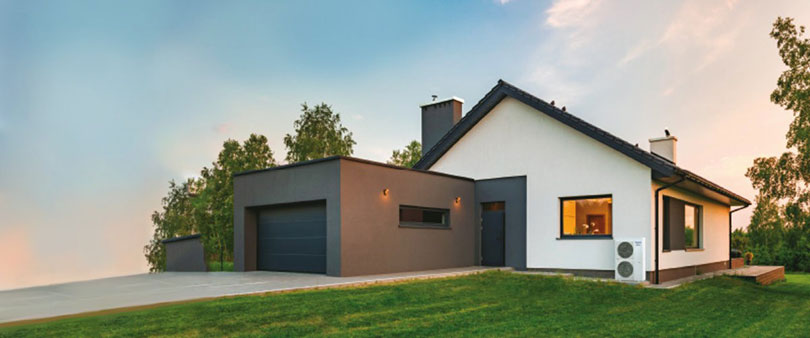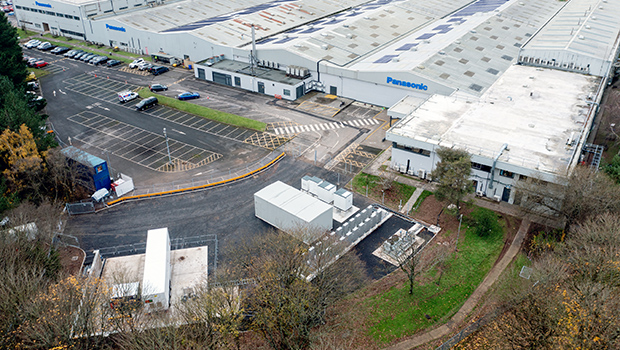Panasonic Boasts Green Heating & Cooling Solutions for CO2 Footprint Reduction at IFA 2019

Panasonic Heating and Cooling Solutions will be showcasing its high-efficiency, environmentally-friendly Aquarea Air to Water Heat Pump that is helping homeowners cut their heating bills and reduce their impact on global warming. The Aquarea Air Source Heat Pump range is designed for both residential and commercial environments.
Energy efficient heating solution
Panasonic’s heat pump provides comfortable indoor living by delivering outstanding heating and cooling performance all year round and has been awarded with the highest energy efficiency class rating. Designed to perform with incredible efficiency even when outdoor temperatures are as low as -20°C, the Aquarea Air to Water Heat Pump is a cost-effective solution that reduces maintenance costs when compared to oil or gas burners.
Leading the transformation to a low-carbon society
In support of the global efforts to prevent climate change, Panasonic is prioritising the ‘Decarbonisation of Society’ through its advanced Air to Water Heat Pumps. As heating energy represents 78.9% of household energy consumption in Europe1, efficient technology is vital for a more sustainable and energy efficient home.
In a bid to meet Europe’s rapid transformation to a low-carbon society, Panasonic’s low energy Aquarea Air to Water Heat Pump range not only delivers results and saves costs, it also answers the rising demands for clean energy sources, pushing innovations for ‘A Better Life, A Better World’. While fossil fuel based oil and gas boilers produce lots of emissions which pollute our climate and lead to global warming, the air-to-water heat pump is part of a new generation of heating solutions that use a renewable, free energy source (the air) to heat or cool the home and produce hot water2 with low emissions, keeping the air fresh and clean.
In addition, to support a greener approach, Aquarea uses R32 refrigerant. R32 refrigerant is much more eco-friendly as its GWP (Global Warming Potential) index is three times lower than that of today’s most used refrigerant R410A. In other words, Panasonic’s heat pumps are not only three-times more environmentally friendly and CO2-saving than industry average that use R410 products, it also uses less refrigerant due to the higher efficiency of R32, further enhancing its contribution to a greener future.
Furthermore, in keeping with the ‘Decarbonisation of Society’ principle, Panasonic’s Aquarea Heat Pumps boast low CO2 emissions with the ability to be connected with energy saving products such as Solar Panels, therefore reducing its carbon footprint for a greater environmental solution.
To find out how Panasonic technology is shaping the way we live, visit Hall 5.2 a/b at IFA 2019 from 6th – 11th September, at the Messe Berlin Exhibition Grounds. With key retailers and consumers attending the event, Panasonic will excite the industry with a round-up of the most innovative consumer technologies of the future.
*1 Data sourced from Eurostats
*2 Sourced from Panasonic Heating & Cooling PAPAEU catalogue, p.21.
Recommend Pages
News articles relevant to this topic were not found.
-
Bringing balance to People, Society and the Planet: Panasonic’s holistic Japanese innovations and Green IMPACT vision on show at IFA 2025

-
Panasonic to launch Germany's first Proof-of-Concept of a Fuel Cell-powered Customer Experience Centre

-
Panasonic Introduces Upcoming Hydrogen-Fuel-Cell-Based Energy Solution in Germany for CO₂-Neutral Offices

-
Panasonic Announces Two New Cameras: Compact Micro Four Thirds LUMIX G97 and Pocket-Sized Travel Zoom LUMIX TZ99

-
PANASONIC OPENS EUROPE’S FIRST PANASONIC HX RENEWABLE ENERGY DEMONSTRATION FACILITY IN CARDIFF

-
Panasonic Announces Firmware Update to Improve the Shooting Experience and Sharing Functionality of LUMIX S5II and S5IIX

-
Panasonic Introduces the World’s Smallest and Lightest* Long Zoom Lens: LUMIX S 28-200mm F4-7.1 MACRO O.I.S. (S-R28200)

-
Panasonic Introduces the World’s Smallest and Lightest* Medium-telephoto Fixed Focal Length Macro Lens: LUMIX S 100mm F2.8 MACRO (S-E100)










